Wine
Wine in Portugal
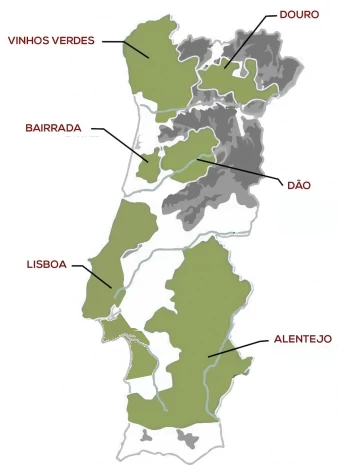
Portuguese wine results from millenary traditions of the several civilizations that inhabited the Iberian Peninsula. The traditions of cultivation and production have improved over the years with origins in the Phoenicians, Carthaginians and, above all, the Romans.
Exports of Portuguese wines began during the Roman Empire and, a few centuries later, with the signing of the Methuen treaty (the cloth and wine treaty) with the United Kingdom.
Portugal has one of the oldest demarcated regions in the world, the Douro region, where port wine and vinho verde are produced, are considered by many to be some of the finest in the world.
Portuguese wine regions
Portugal has 14 demarcated wine regions, from north to south: Trás-os-Montes, Douro, Vinhos Verdes, Távora-Varosa, Dão, Bairrada, Beira Interior, Lisbon, Tejo, Setúbal Peninsula, Alentejo, Algarve, Madeira and Azores. There are 343 types of grape varieties grown for wine production, registered by the Instituto da Vinha e do Vinho (IVV). Of the grapes produced 194 are red, 149 white, and of the 343 varieties 250 are of Portuguese origin, such as Alfrocheiro, Alvarinho or Touriga Nacional.
Moscatel Wine
Moscatel wine is a fortified wine produced mainly in two regions, the Setubal Peninsula and the Douro region. The moscatel grape is characterized by its sweetness and richness and it is for this very reason that the grape skin is used in the fermentation process, in order to extract the maximum flavor possible. Muscat can be tasted as an aperitif, preferably at 10ºC, as well as accompanying desserts, and should be served at 16ºC. We recommend that you try it together with our sweet rice.
Organic Wines
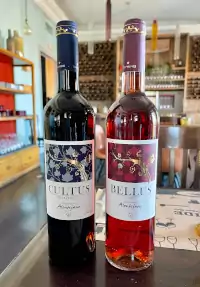
The organic wines are the result of the production of organic grapes. These are born with very different characteristics, which is reflected in the wines. The difference between these wines and the others starts in the way the vine is taken care of. The organic grape growers and producers do not use any herbicide or pesticide or product that has been synthesized.
Since 2012, rules and limits have been implemented in the production of organic wines, including reducing the maximum limits of sulfites and sulphorous in these wines. From our wine list, we have red, white and rosé organic wines. The Suavis, goes well with our fish starters, as well as the Mouraz Bio Encruzado. The Bellus Rosé is recommended as an aperitif or with delicate appetizers such as oysters, grapes, cucumber and citrus or swordfish tartar. The Mouraz Bio and Cultus SG can be enjoyed from the beginning to the end of your meal.
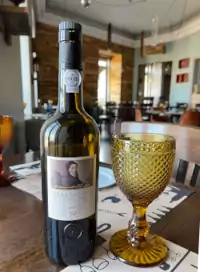
Porto Wine
Port wine is a fortified wine, produced in northern Portugal, in the Douro region, and is highly recognized both nationally and internationally. Its origin dates back to the 17th century, and it was sold to several countries, the biggest exporter being England, due to the connections that were established between the two countries after the Methuen Treaty, in 1703.
Port wine has several denominations such as White, Ruby, Tawny, Vintage, LBV, Reserve, Harvest, Vintage and Crusted. From our selection of Port Wines, the Whites go very well with our rice pudding as well as the cream cheese cheesecake; the Tawny and the Colheita go well with our cheese selection as well as with the ice cream, for dessert, and the LBV with the chocolate brownie.
Madeira Wine
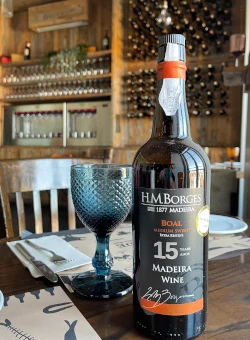
Madeira wine is a fortified wine produced on the island of Madeira, and is the main product of the island's economy. The origin of the wine dates back to the 15th century, when the island itself was discovered. This wine quickly became very well known, and was even mentioned in William Shakespeare's play "Henry IV" in the 11th century.
It has several variants of accompaniment according to the 4 types of wine. Dry Madeiras are great as aperitifs. Also with appetizers or to accompany soups are the Madeiras Meio Seco (medium-dry). Cheeses go perfectly with Madeiras Meio Doce and Madeiras Doce are ideal for sweets, chocolates and to accompany coffee.
In our menu we have the Malvasia, 10 years old, which is a semi-sweet wine, harmonizes very well with chocolate and dried fruits, and is therefore perfect for our chocolate brownie. The Boal 15 years, a sweet Madeira wine, pairs very well with the cheese selection.
Green Wines
Why are they called Vinhos Verdes?
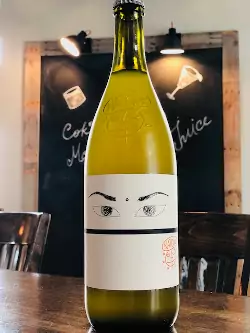
The Demarcated Region of Vinhos Verdes (between the rivers Douro and Minho, in the northwest of Portugal) is prodigious in green landscapes, from forests to fields, up the steep mountain peaks, and embracing valleys to the sea.
Another, more unlikely possibility: The lack of optimal sun exposure conditioned the ripening process of the grapes, so they were harvested still in a state considered "green". However, these methods are no longer used and the grapes are harvested at their optimal stage of ripeness.
The green wines are present in Tágide Gastrobar by the hand of Niepoort with its exuberant Drink Me Nat Cool.
Evoking the wines of yesteryear, bottled very early and with residual sugar, it refermentates in the bottle originating the carbon dioxide gas that makes it vibrant, with excellent acidity and punctuated by saline notes.
Some Portuguese grape varieties
Rabigato
One of the oldest white grape varieties in Portugal, Rabigato originates from the Douro region where it presents its greatest expression Balancing the alcohol content with acidity, Rabigato wines have medium intensity, floral aromas that refer to fresh flowers and citrus, and liveliness on the palate due to high acidity.
Pairing Suggestions- Swordfish tartar, cucumber, green apple, and Vietnamese cilantro.
- Strawberry gazpacho, grilled sardines and toasted Alentejo bread
- Swordfish, peas, mint, toast and onions.
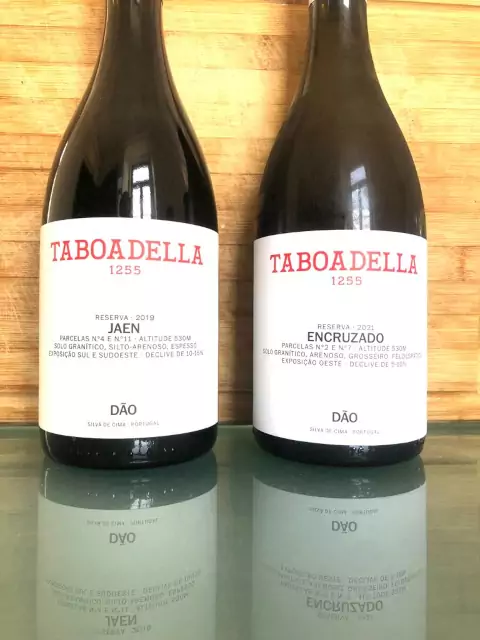
Encruzado & Jaen
Two wines with origin in the demarcated Dão region. The Encruzado with production limited to the Dão region, is characterized by being firm and exuberant with a linear and silky texture. Dão Terroir is the best definition for this white wine. Produced mostly in the Taboadella vineyard, it is considered by many critics as one of the few white varieties of impeccable quality. Jaen, on the other hand, originates from the northwestern Iberian Peninsula but has found in the Dão region an ideal place of production. Its origin was unknown until some time ago, when it was discovered that the variety's original name is Mencía. It is a peninsular icon characterized by its bluish color and juiciness together with an intense, fruity aroma combined with pepper.
Some wines from the Azores
Frei Gigante
Coming from the Azores, it represents the volcanic terroir so characteristic of the archipelago. It is a wine composed of 3 grape varieties, Arinto from the Azores, Verdelho and Terrantez do Pico.
Aroma of citrus and tropical fruits. Seaweed finish, reminding the sea breeze in a volcanic environment. Excellent pairing with seafood and fish.
Terras de Lava
Also produced in the volcanic terroir of the Azores, this is another connotation wine in the national market and a delicacy in the Azores. It is composed of 2 grape varieties, Cabernet Sauvignon and Cabernet Franc.
The wine, after 14 months aging in French and Portuguese oak barrels, acquires a ruby color of great elegance and vivacity. Smooth aromas, with clear highlights of black plum, dark chocolate and menthol. Saline and long finish.